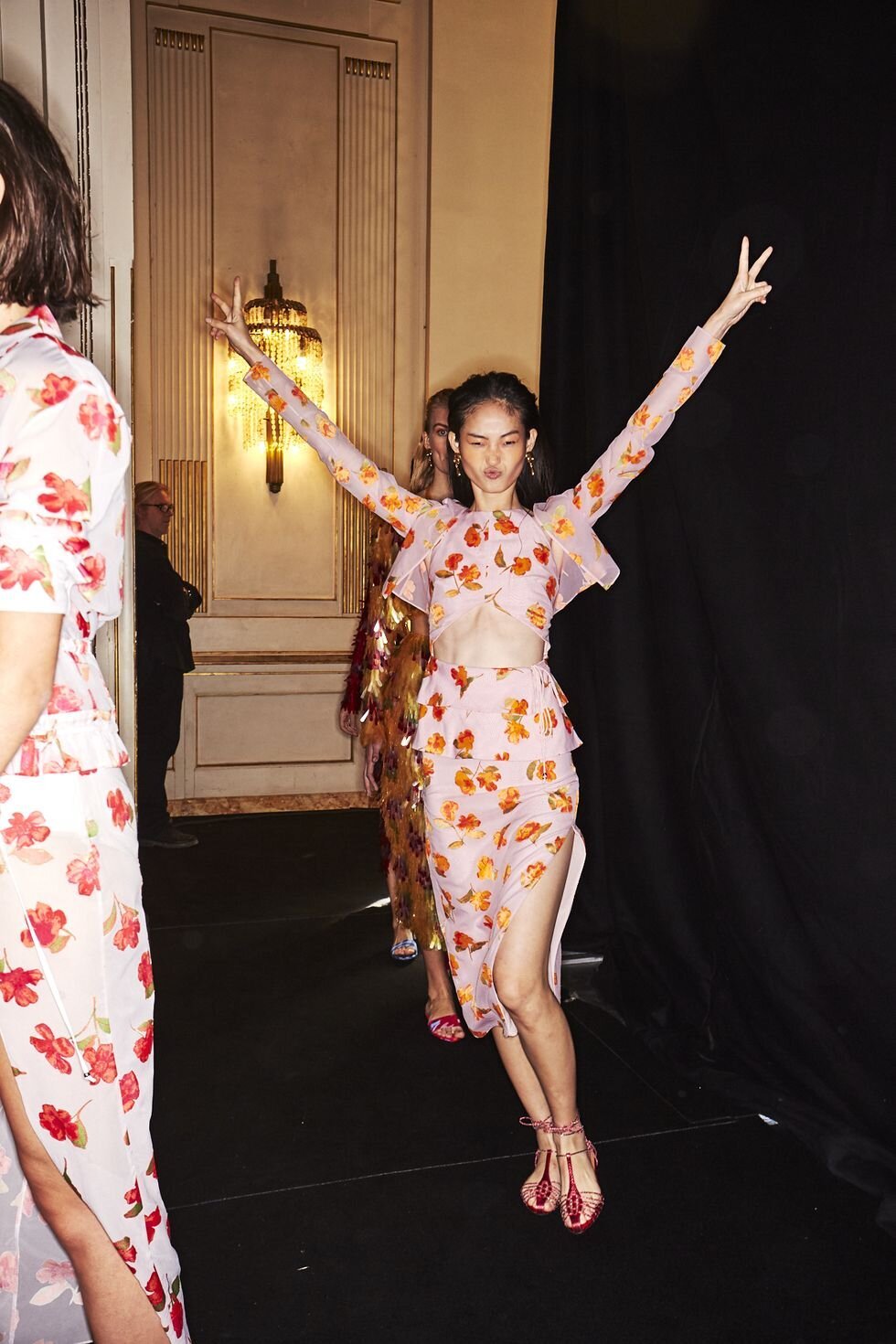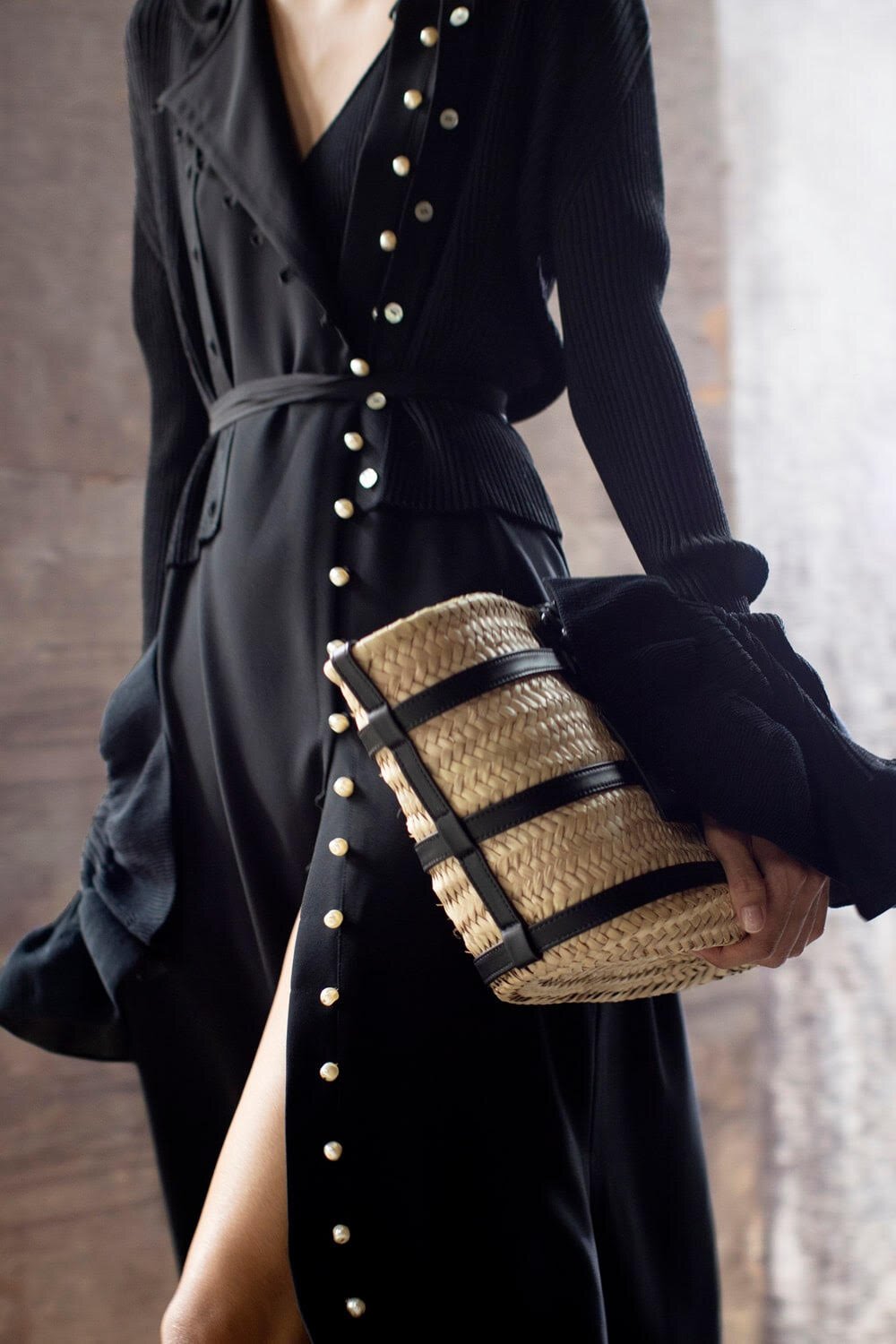On the Transformative Power of Fashion: The World of Joseph Altuzarra
Hapa Mag - MARCH 10, 2021
By Emerald Liu
The Story of a HAPA Designer
Joseph Altuzarra was born in Paris to a Chinese-American mother and a French-Basque father. To this day you can see the influence of his multicultural background on his designs, such as in the Family Portrait Series launched this past September.
In it the designer takes notes from his maternal grandparents and their journey from Shanghai to America during the ‘40s. The collection is touchingly modeled by his grandmother Jeannette Wei, mother Karen Altuzzara, cousin Lilly Kwong and daughter Emma, and feels deeply personal.
"It meditates on the meaning of family and the importance of heirlooms in the narrative we build over time. To honour those that have come before me, and the next generation, I wanted to share fall through my own lens, photographing the most important women in my life, as seen in the newest collection. The series captures not just the enduring vitality of my family, but also the East-meets-West texture of the season."
Joseph Altuzarra's mother, Karen Altuzarra, wears the fall 2020 collection. Photo: Courtesy of Altuzarra
Joseph Altuzarra's grandmother, Jeannette Wei, in the fall 2020 collection. Photo: Courtesy of Altuzarra
Joseph Altuzarra's mother, Karen Altuzarra, and his daughter, Emma Altuzarra-Weissman, in the fall 2020 collection. Photo: Courtesy of Altuzarra
Growing up as the only non-Caucasian in his school in France definitely left an impression on the young Altuzarra. Not being very popular, he spent his free time drawing and reading. These passions afforded him a sense of escapism. It was in this period that his interest in a Pygmalion-type transformation started to take shape. The idea that changing the way one dressed could alter how someone is perceived began to fuel his interest in fashion. This bore the conception of the Altuzarra woman — who represented the opposite of the teenage Altuzarra — super confident, super sexy and very je m’en fou.
As an adolescent he felt undesired, which in turn resulted in a fascination with being loved and desired. Being mixed race, and growing up in an era and environment that categorise you as an outsider, can create a breeding ground for this sense of being undesirable. Coming from a multicultural background can make you stick out like a sore thumb, and this, together with a lack of representation, lends itself to the probability of experiencing forms of alienation. As an antidote, Altuzarra created a woman who breathes seduction. She’s a manifestation of his anima, and there is a consistency to her because she’s lived internally in Altuzarra’s imagination and continues to inspire him.
Joseph Altuzarra
“This feeling of not belonging or being undesired is so deeply rooted in me wanting to find a place of power and confidence and a sort of sexual freedom that I am always going to be engaged by it. Or at least the ideal of it,” the designer relayed during an interview with Tim Blanks in 2017.
His own metamorphosis led him to attend Swarthmore College in Pennsylvania, where he graduated with a B.A. in Art and Art History before moving to New York, where he scored an internship at Marc Jacobs. He would go on to work under Riccardo Tisci at Givenchy and debut his own collection, to rave reviews, during New York Fashion week in 2009. Despite the backstage improvisations — rotating shoes between the models and stuffing Kleenex to compensate for their different sizes — the polished technique of his designs made him an up and comer to be reckoned with. In similar make-do fashion, he landed his first account with Barneys in his parents’ Parisian living room, where one of their buyers sat scribbling notes, contemplating his 18-piece debut, when she announced Barneys would place an order before rushing off to catch a flight. A career milestone. In celebration of the brand’s ten year mark in 2019, he showed off a special capsule collection at the Upper East Side store. The concept for the collection? The one that got away. Reissuing favourite archival pieces that ten of his friends missed the first time around. Model Shu Pei Qin for example, who’s been a mainstay on Altuzarra’s runways over the years, opted for a laced black velvet dress from the Edward Scissorhands collection.
The designer’s imagination is often sparked by movies or literature. A case in point was the Spring ’19 collection, which oozed a heavy Mediterranean vibe and took cues from films such as Cinema Paradiso, Stealing Beauty, and Call Me by Your Name. The novel on which the latter is based was devoured by the designer while summering in the Hamptons. Raptured by Aciman’s passages, he poured over its pages, and the zestful intimacy it portrays carries through in his designs. Altuzzara’s passion seeps through his work and is evident when viewing his collections. He’s still a devout bookworm, posting a 2020 recap of his year in reading. Among his favourites: Never Let me Go by Kazuo Ishiguro and On Earth We Are Briefly Gorgeous by Ocean Vuong.
The latest collection for Spring ’21 took a leaf of inspiration from his bookshelf during lockdown. Adapting to remote working, Altuzzara had to transition from designing in a studio space to a home design setting. He and his team managed to come up with a new process, using new tools and taking advantage of working digitally. It was important to him to embrace the vulnerability and transparency of the process, while also acknowledging the hard work of his team, by showcasing part of it in his lookbook. During this period of isolation, Dune was one of the many books he read. “It really resonated with me and my anxieties about survival,” he said during an interview with Vogue.
Spring/Summer 2021 Collection
Spring/Summer 2021 Collection
Spring/Summer 2021 Collection
Many are suffering due to the pandemic, and anxiety is a very real threat. Frank Herbert’s descriptions of the sartorial choices to endure difficult conditions struck a chord with Altuzarra. Modifying the definition of sexiness to the current circumstances, and redefining sexuality in a time when perhaps adaptability and strength are paramount, we see the Altuzarra silhouette shapeshift from its earlier incarnation in the form of thigh-splitting pencil skirts to more functional and flowing forms. In a time of global transformation, Joseph Altuzarra shows us how we can take time to transform ourselves, or our perception of ourselves, to adjust to a new and unexplored reality.
Altuzarra’s Quarantine Process
Emerald Liu is a Sino-Belgian writer who loves to incorporate the scientific with the aesthetic and draws inspiration from different cultures to create an open dialogue in each piece. Her poems have been featured in Verses Magazine and included in group art exhibitions in Antwerp as well as New York City. You can find her essays in The Millions, House Letters, and Drawing Matter.
She is currently the Prose + Poetry editor for Asians In The Arts. As a fervent cinephile, she also dabbles in screenwriting.










